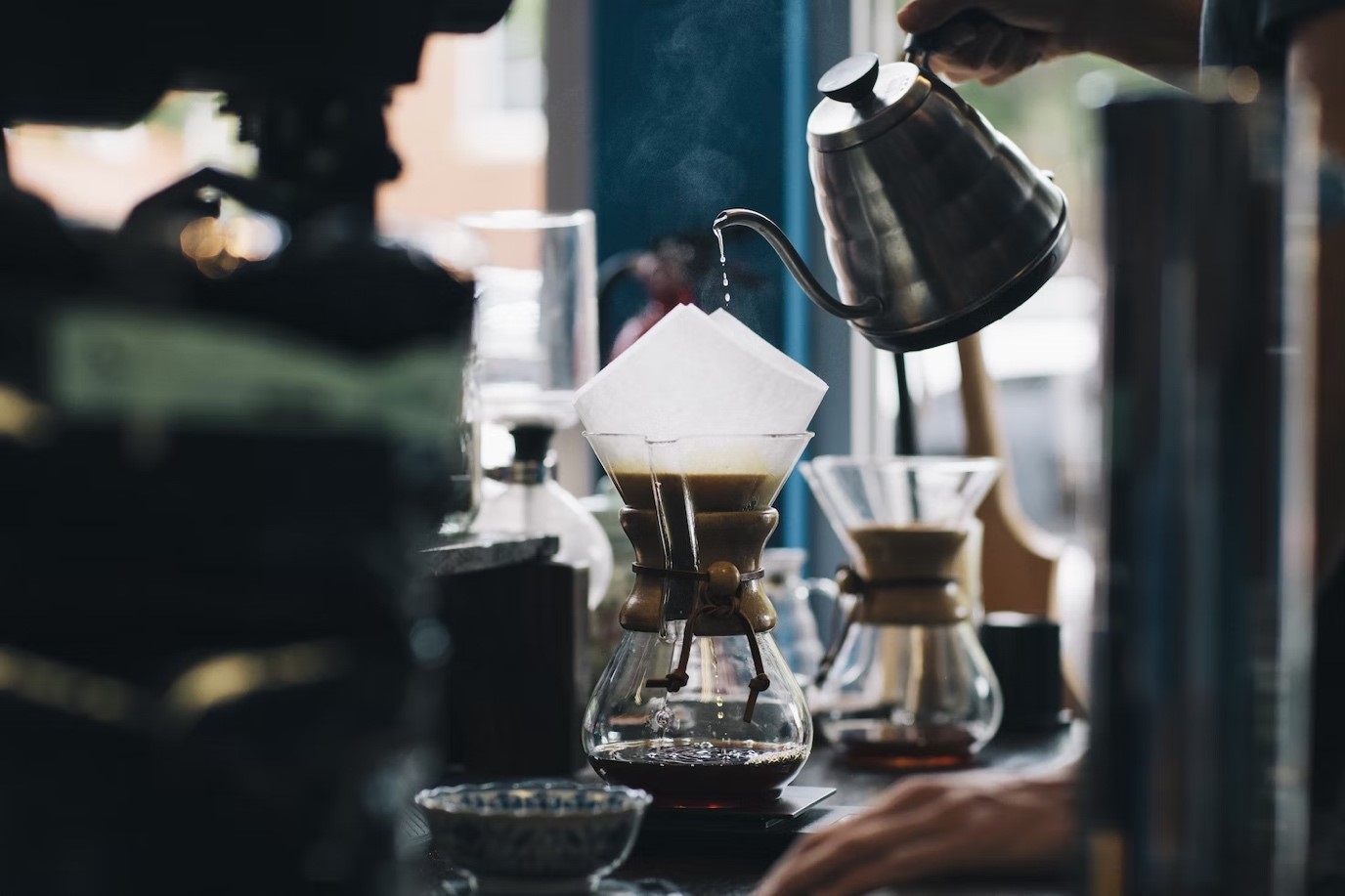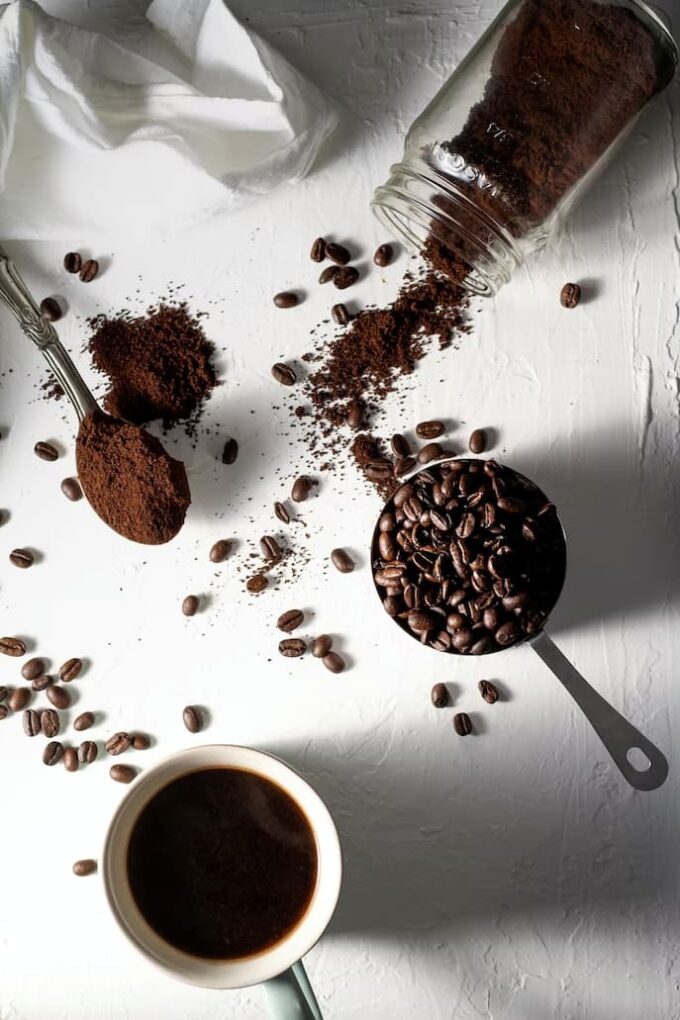How to Make the Right Coffee

They say that coffee is a mystical drink… Depending on your tastes and claims, preparing and serving coffee can be turned into a ceremony. To do this, it is very important to know what utensils and appliances are used to make coffee. The modern coffee world is the world of the barista and his magic, which is always in front of customers.
Water
Water quality is very important for making good coffee; most drink is water. Bad water can seriously spoil the taste of the drink. Regular tap water (unless you have a good water filter) is not suitable for making high-quality coffee, so it is best to use fresh bottled water. Avoid softened water – calcium and magnesium salts have been removed from such water, negatively affecting coffee’s taste and aroma. For the same reason, you can not use distilled water because it does not contain salts and minerals. Remember always to use fresh water – stagnant water quickly breeds microorganisms and bacteria that negatively affect the taste of coffee.
Temperature
Water temperature is very important when making coffee. The ideal temperature is between 91 and 96 degrees Celsius. It is believed that the closer the temperature to 96 degrees, the better, but it all depends on the variety and grinding of coffee. Never use freshly boiled water (100C) to prepare your drink – such water burns the coffee, and the result is only a bitter, unpleasant liquid.
Grinding And Brew Time
Bean grinding is a key factor in making coffee. The finer the grind, the larger the coffee surface in contact with hot water. It is often heard that the finer the grind of coffee, the better, but this opinion is erroneous – too fine grinding can ruin the drink. We want to extract the full taste and aroma from the grains – no more. If the grind is too fine or the coffee has been in contact with water for too long, the drink will turn out bitter.
Proportions
The proportions of water and coffee also greatly affect the taste of the resulting drink. Therefore, we always recommend that you use the proportions of the manufacturer of the coffee maker as a basis and then experiment. Specific proportions depend on your taste, the softness of the water, grinding, and the type of coffee.
Purity
If you notice that the taste of coffee has deteriorated, check the condition of the coffee accessories. It seems obvious, but often due to lack of time, we do not pay due attention to their cleanliness. However, bacteria found in a coffee cup, French press, or cooler that has not been thoroughly washed can spoil the drink’s taste.
Tastes of Different Countries
Depending on the terroir, farm, roast, coffee preparation method will vary. But will coffee from the same region have anything in common? And what is special and distinctive about coffee from different areas?
Coffee from Africa
The African continent is the historical birthplace of coffee. Coffee Africa is more than 30 countries, but the most exquisite coffee is grown on the plantations of East Africa – in Ethiopia, Kenya, Uganda, Burundi, Tanzania, Zambia, and Zimbabwe.
The coffee grown here is famous for a variety of vibrant floral and fruity notes, from the almost floral-citrus character of coffee from Ethiopia and the pronounced acidity and berry notes of Kenyan coffee to the fruity light notes of coffee from Zambia.
Bouquet:
- berry,
- wine,
- citrus,
- fruity,
- floral and spicy shades;
- red and orange tropical fruits,
- red berries,
- fruits of the middle band

American Coffee
Due to Central America’s high altitudes and volcanic soil, coffee beans often have a bright, almost tangy sweetness that can develop into nice chocolate tones. As for specialty coffee, this is the region where most of it is produced. As a result, the coffee is balanced and light; there is no bitterness, and the acidity is bright and juicy.
Bouquet:
- orange and yellow citrus fruits,
- tropical yellows, green fruits (melon, mango, pineapple, apricot), medium-bitter chocolate (cocoa, figs, spices, tea notes),
- dates,
- cashews,
- wild berries (bone berries, blueberries, strawberries).
Coffee from Indonesia
Asia produces a lot of coffee. Coffee from this region has low acidity and earthy, somewhat bitter tastes. The specialty segment is not very developed here. Although many like these tastes, the bitterness harmonizes with the sweetness of desserts like chocolate or caramel.
Conclusion
If, with a successful combination of all the above points, you have found the most suitable recipe for yourself, stick to it and try to reproduce this cooking method with different blends. After all, if you change at least one part of the process, the result will be different. If you want to experiment, change only one component, not several. For example, if you change the ratio of water and coffee, then leave all other components the same – this is the only way you will feel the difference in taste.